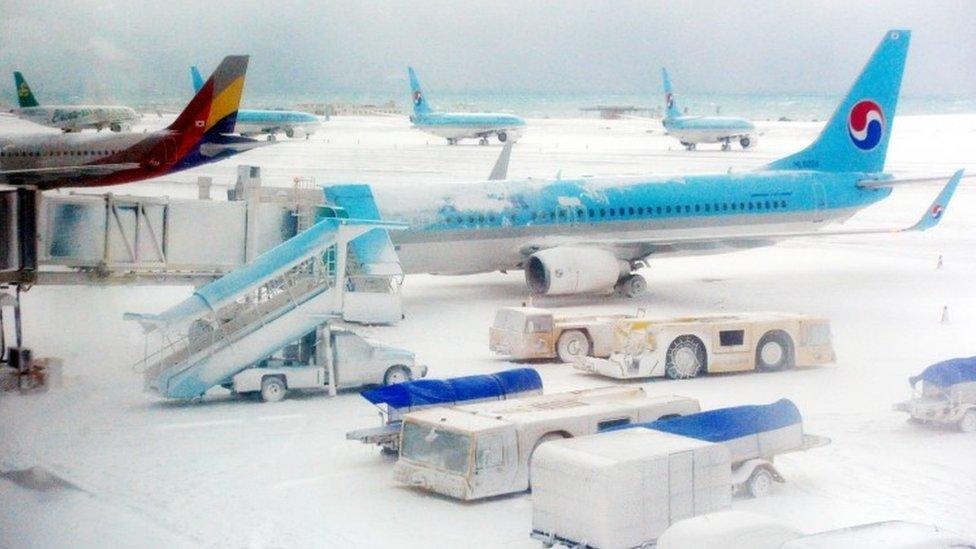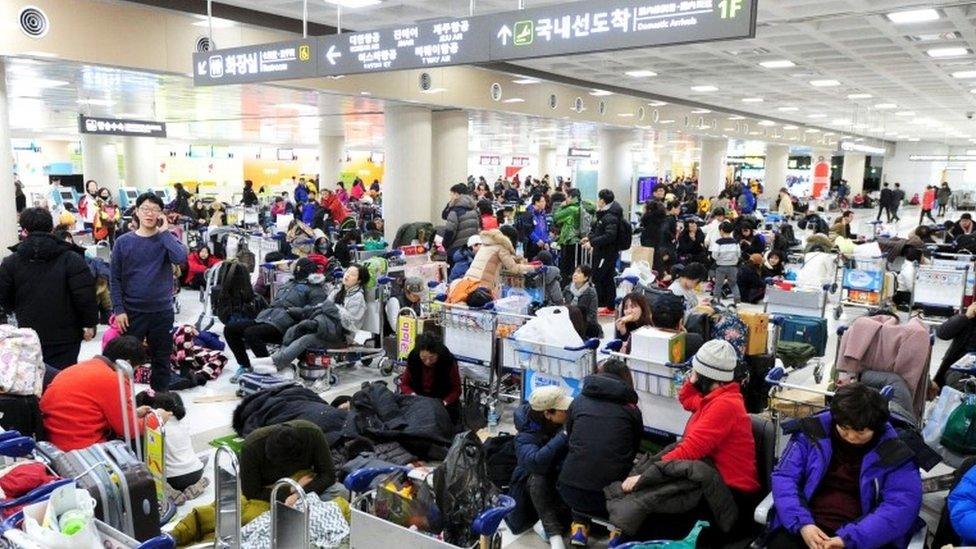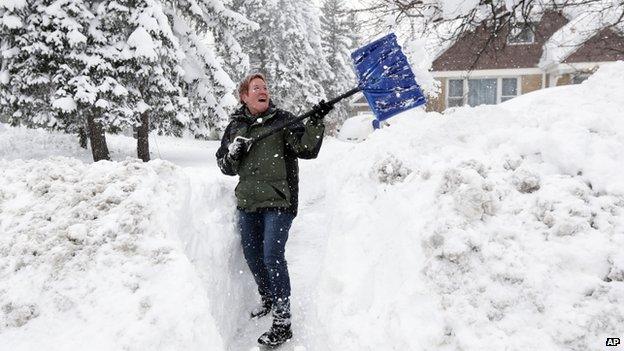South Korea and Hong Kong shiver as snow disrupts travel
- Published

Flights have been cancelled for a second day at Jeju airport
The South Korean island of Jeju has seen its biggest snowfall in three decades, causing hundreds of flights to be cancelled.
Jeju is a popular holiday destination and thousands of visitors are reported to have been left stranded.
All 517 flights scheduled for Sunday were cancelled, as well as about 60 on Monday, following 11cm (4.3in) of snow.
In Hong Kong, residents shivered in three degrees Celsius, the lowest temperature there in nearly 60 years.
"It is very cold and windy over Hong Kong. People are advised to put on warm clothes and to avoid prolonged exposure to wintry winds," read a statement on a city government website.
Some of the more intrepid ventured out to climb the territory's highest mountain, Tai Mo Shan.

Passengers have been stranded at Jeju International Airport

Hikers in Hong Kong going up Tai Mo Shan were covered in ice
"From the weather report it sounded like there might be frost here, so I came to check it out," said one man. "There was no rain at first, but at around 4am it rained quite heavily and I couldn't go further up."
Another man said: "It's not so bad if you wear enough clothes."
A third said: "It's far too cold for me. Hong Kong is supposed to be warm. This is not Hong Kong."
China has issued its second highest weather alert amid the coldest weather in decades.
The state-run People's Daily said on its Weibo social media account that the city of Guangzhou had recorded its first snowfall since 1929.
In Japan, the Kyodo news agency said five people had died and more than 100 had been injured in weather-related accidents across the country in the past 24 hours.
Transport services continue to be disrupted.
The agency also said it had snowed in Amami Island, a subtropical island 380km (235 miles) south-west of Kagoshima City, for the first time in 115 years.
- Published9 February 2017
